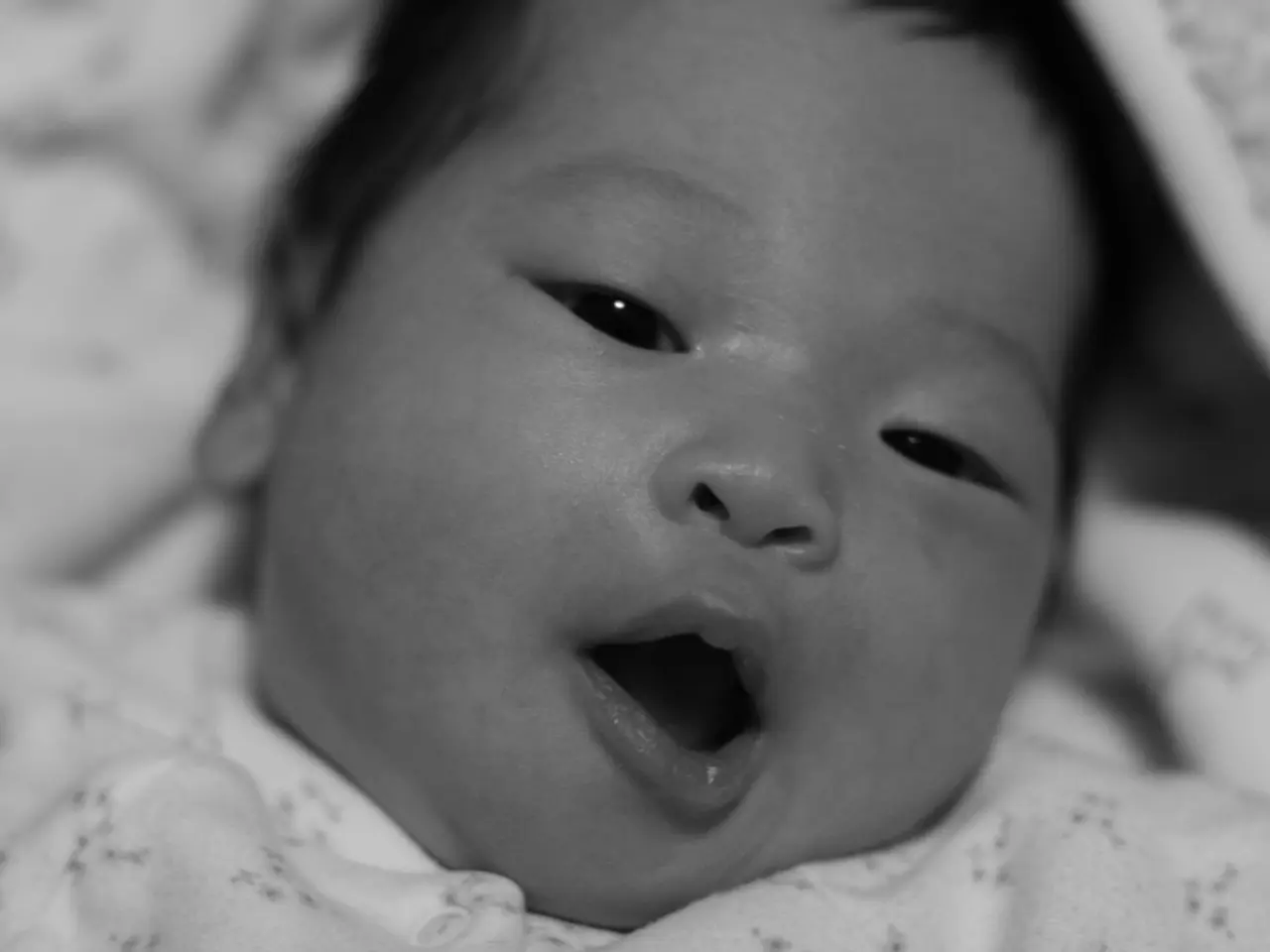Respiratory Issue: Signs, Root Causes, and Coping Strategies for Apneic Breathing
Understanding Apneic Breathing and Sleep Apnea
Apneic breathing, a temporary stop in a person's breathing, can be a concerning issue for both infants and adults. This article aims to shed light on the causes, symptoms, and treatments of apneic breathing, particularly sleep apnea.
Apneic Breathing in Infants
Premature birth can lead to apneic breathing in infants due to an underdeveloped respiratory system and breathing control. Infants between the ages of 2-4 weeks may experience short cycles of apneic breathing lasting for 5-10 seconds, known as periodic breathing. Other causes of infant apnea may include birth asphyxia, head trauma, maternal drug use, exposure to toxins, infections, metabolic issues, congenital conditions, gastroesophageal reflux, bronchiolitis, whooping cough, and obesity.
For infants, a doctor may perform a full medical and family history, physical examination, complete blood count, tests to measure calcium, electrolyte, and glucose levels, blood and urine tests to check for any infections, an electrocardiogram to check heart rhythm, and possibly pelvic ultrasounds.
Sleep Apnea in Adults and Children
Apneic events, involuntary pauses in breathing, can last for more than 20 seconds in preterm infants. In adults and children, common symptoms of apneic breathing (such as in sleep apnea) include loud chronic snoring often interrupted by pauses or silent periods followed by gasping or choking sounds during sleep, pauses in breathing or abnormal breathing patterns, excessive daytime sleepiness and fatigue, morning headaches and dry mouth upon waking, restless or non-restorative sleep, gasping or choking sensations that awaken the person, mood changes, irritability, difficulty concentrating during the day, behavioral or attention issues in children, and additional symptoms noted in adults may include night sweats, increased nighttime urination, and sometimes bruxism (teeth grinding).
Sleep apnea can be broadly categorised into two types: Obstructive Sleep Apnea (OSA) and Central Sleep Apnea (CSA). OSA is the most common form, characterised by an obstruction of the upper airways during sleep that can partly or completely block airflow. CSA, on the other hand, is caused by an issue with the brain signals that control a person's airway and chest muscles during sleep. Factors such as hormonal changes, certain health conditions, smoking, alcohol, inherited genes, large tonsils, tongue, or a thick neck, and conditions like stroke, myasthenia gravis, and chronic opioid medication use can increase the risk of sleep apnea.
Treatments for Apneic Breathing
Treatments for apneic breathing may depend on the type and underlying cause. Lifestyle changes such as achieving and maintaining a moderate body mass index (BMI), getting regular exercise, adopting healthy sleeping habits, limiting alcohol, quitting smoking, sleeping on the side, and mouth and facial exercises may help treat apneic breathing. Breathing devices like CPAP or APAP machines may be used to deliver air pressure to the throat and keep the airways open. Oral devices may be worn to keep the airways open and hold the jaw or tongue in certain positions to prevent airway blockages. In severe cases, surgery may be necessary to remove the tonsils and adenoids, implant a device to help keep the airways open, remove soft tissue from the mouth and throat, or adjust the jaw to enlarge the upper airways.
In conclusion, understanding apneic breathing and sleep apnea is crucial for early detection and effective treatment. If you or a loved one exhibit symptoms of sleep apnea, it is recommended to seek medical evaluation to diagnose and manage the underlying condition.
- The temporary interruption of breathing, known as apneic breathing, can occur in both infants and adults, and in some cases, it could be a sign of sleep apnea.
- Sleep apnea is a medical condition marked by chronic snoring that is often interrupted by pauses or silent periods, excessive daytime sleepiness, and gasping or choking sounds during sleep.
- Sleep apnea can be classified into two types: Obstructive Sleep Apnea (OSA) and Central Sleep Apnea (CSA), both of which can have serious impacts on a person's health and wellness.
- Healthcare providers may utilize various diagnostic tests, such as medical and family history evaluations, physical examinations, blood and urine tests, and imaging studies, to identify the root cause of apneic breathing.
- Proper management of apneic breathing may involve lifestyle changes, the use of breathing devices, oral appliances, or in severe cases, surgical intervention to improve respiratory conditions and support mental health and overall quality of life.




